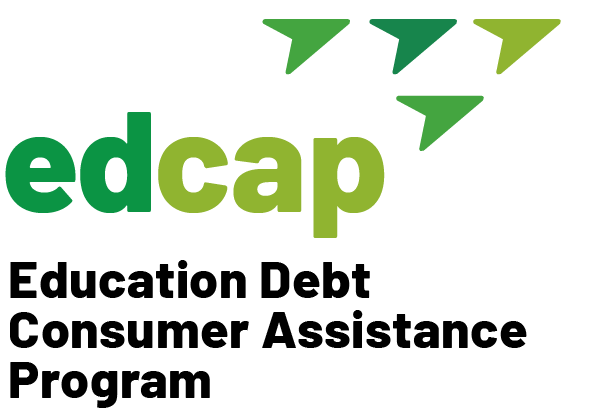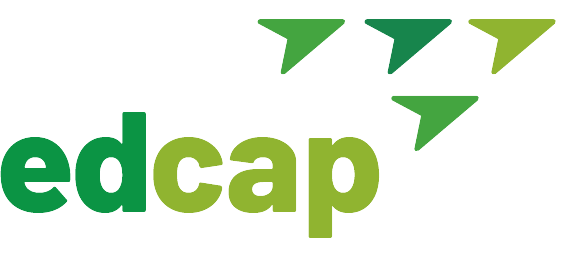- Reopening of PAYE and ICR Plans
- SAVE Update
- 2025-26 FAFSA Opens
- Spousal Income for IDR Borrowers
- Recertification Deadline Extensions
- Some Payments Reset to Standard Plan Rates
- IDR Processing Set to Resume
- IDR Notices
- Processing Forbearances
- PSLF Buyback
- Missing PSLF-Eligible Months
- Disability Discharge
- Filing Complaints
- Negotiated Rulemaking
- Bill to Reduce Interest Rates
Breaking News: IDR Forgiveness Trackers Removed from Federal Student Aid Accounts
It appears that the Department of Education has removed IDRF trackers from at least some borrowers’ FSA accounts. Stay tuned for more information!
Collections Resume for Defaulted Student Loans Starting May 5

The U.S. Department of Education has announced that collection activities on defaulted federal student loans will resume on Monday, May 5, 2025. This marks the end of the collections pause that has been in place since March 2020.
Borrowers with defaulted loans may once again face tax refund interceptions, Social Security offsets (including retirement and disability benefits), and eventually, wage garnishment. Tax refund interceptions will apply only going forward. Borrowers who have already filed their 2024 taxes and received a refund will not be affected.
Those receiving Social Security benefits may see a reduction in their monthly payments. It remains unclear whether the new administration will maintain the Biden administration’s more generous offset formula, which protects income up to 150% of the Federal Poverty Level (currently $1,956 based on the 2025 FPL), compared to the previous threshold of $750 that was used before the payment pause.
For borrowers earning a W-2 wage, up to 15% of disposable income may be subject to garnishment. To learn more about wage garnishment rules and limitations, visit the Department of Labor’s fact sheet.
The Department says it will begin notifying affected borrowers by email and will launch an outreach campaign to help them return to repayment or exit default.
Borrowers can explore options like loan rehabilitation or consolidation to get out of default.
For more guidance and assistance, register for our upcoming webinar on May 6 at 12PM ET: Avoiding Credit Harm & Collections: An Emergency Webinar for Borrowers Behind on Student Loan Payments.
SAVE Update
The SAVE forbearance remains in effect with a scheduled end date of July 31, 2025, though it may be extended or end sooner. The forbearance is non-interest bearing and borrowers are not required to make payments during this time, but these months will not count toward either income-driven repayment cancellation or Public Service Loan Forgiveness.
SAVE is no longer available as an option for borrowers seeking to enroll in an IDR plan. Both the online IDR application and the paper form have removed SAVE as a selection and have also eliminated the option to let the servicer enroll you in the “lowest monthly payment”—i.e., “I want the income-driven repayment plan with the lowest monthly payment.”
This gives borrowers the burden of comparing IDR plans to determine which one will have the lowest monthly payment. Use EDCAP’s IDR calculator and FSA’s Loan Simulator to determine the best repayment option. Please note that the simulator’s projections of time to payoff, total paid, and other key figures may not incorporate the results of the one-time income-driven repayment account adjustment. When a borrower’s loans have received the count adjustment, the Loan Simulator is primarily useful for estimating monthly payment amounts.
IDR Plan Options
Borrowers seeking to enroll in an IDR can choose from IBR, PAYE and ICR. Borrowers should complete the online IDR application. Know that the IRS data retrieval tool to get their tax filing information is not working, which means borrowers will be asked to provide proof of income. Proof can be 2024 taxes (or 2023 if they have not filed), W-2 or recent paystubs.
As a reminder, IBR, and PAYE each have a “partial financial hardship” requirement for enrollment, which means that borrowers with relatively higher incomes and lower loan balances may not be eligible for them.
Spousal Income for IDR Borrowers
As a result of the AFT lawsuit, pre-July 2023 IDR rules are going back into place. This means that married borrowers filing separately can continue to exclude spousal income from calculations for IBR, PAYE and ICR. When it comes to family size, borrowers CAN include their spouse in the family size when married and filing separately or when separated. Under the SAVE rules, borrowers filing separately could not include their spouse as part of their household if filing separately. The household rules are expected to be implemented by 5/10/25.
Recertification Deadline Extensions
Servicers are expected to finish extending recertification deadlines for IBR, PAYE, and ICR by April 26, 2025. Borrowers should monitor their accounts to avoid missing payments or going into delinquency. If necessary, they can request forbearance.
Borrowers Whose Payments Reset to Standard Plan Rates
Borrowers in IBR, PAYE, or ICR who whose payments were reset to Standard plan rates and missed those payments should be placed in retroactive administrative forbearance by May 10, 2025. Borrowers should check their accounts before recertifying as it may not be necessary.
IDR Processing Set to Resume
Servicers are expected to resume IDR application processing, including switch-out requests from SAVE, by May 10, 2025 — but no timeline yet for clearing the backlog. This is important for borrowers who need to leave SAVE to finish their PSLF.
IDR Notices
Some borrowers have received from servicers a document titled “Notice of Repayment Schedule Change” outlining payments due under the “Income-Driven Repayment Plan” at some time in the future. A borrower who receives a notice worded this way may want to follow up with their servicer to find out which IDR plan they are enrolled in and to confirm payment amounts and dates.
Processing Forbearances
Borrowers will receive a 60-day processing forbearance while IDR applications are reviewed. If the application is not processed, they’ll be placed in general administrative forbearance. Processing forbearances will count toward PSLF — but not toward IDR cancellation.
PSLF Buyback
Borrowers should be able to use PSLF Buyback for administrative & processing forbearances — but questions remain:
- Should processing forbearances need to be bought if they already count?
- Does this include SAVE forbearance? Stay tuned.
Borrowers Missing PSLF-Eligible Months
Borrowers not enrolled in the SAVE plan have reported missing PSLF-eligible months from their payment counts. In other words, they made payments, but their PSLF tracker is not showing some months as eligible. This appears to be a systems or data processing issue. It is recommended that affected borrowers submit an updated Employment Certification Form (ECF). This may trigger a revised and accurate count.
Total and Permanent Disability Discharge (TPD)
The Department of Education seems to be actively processing TPD applications and addressing the backlog. It seems like ED will be able to process discharges for borrowers with Direct loans. Defaulted loans with guarantee agencies or DRG and those with Perkins may experience delays. When in doubt, borrowers should follow up on their application. As a reminder, review the latest TPD application and submission information here when applying.
Filing Complaints
For borrowers who need help addressing and escalating federal student loan issues, it may help to file a complaint with their elected representative. SBPC has this toolkit, which may be useful.
Borrowers can continue to file complaints via FSA but may experience prolonged delays due to the recent layoff.
Negotiated Rulemaking
Negotiated Rulemaking is a collaborative process used by the Department of Education to make changes to or establish regulations. It can take a year or more to complete and introduce changes. ED will be starting Negotiated Rulemaking at the end of this month. Topics include changes to PSLF eligibility, PAYE and ICR. The public is invited to provide comments during portions of this process. To learn more or to register for the public comments, click here.
Bill to Reduce Student Loan Interest Rates
A bipartisan bill is making its way around the House of Representatives that would reduce interest rates on student loans to 2%. Under the bill titled “The Affordable Loans for Students Act,” this rate would be applied to all federal student loans including Plus loans. For a relevant article, click here.





